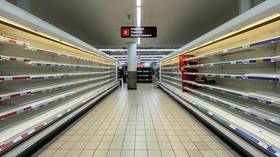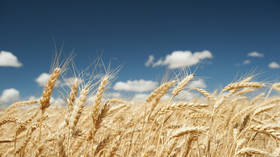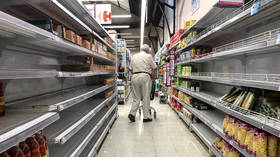The imminent global food crisis is being blamed on Russia, but the truth is rather more complex
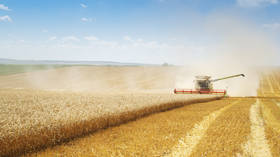
The ongoing Russia-Ukraine conflict is undoubtedly impacting global grain supplies, as well as the means of growing crops around the world. But is the looming global food crisis solely Russia’s fault – as spun by the Western media machine?
Only a few months ago, Covid-19, government-imposed lockdowns and climate change were repeatedly blamed for this scenario.
A recent White House Joint Statement by US President Joe Biden and EU leader Ursula von der Leyen clearly singled out the supposed new culprit: “We are deeply concerned by how Putin’s war in Ukraine has caused major disruptions to international food and agriculture supply chains, and the threat it poses to global food security. We recognize that many countries around the world have relied on imported food staples and fertilizer inputs from Ukraine and Russia, with Putin’s aggression disrupting that trade.”
The concept of global food security these days appear as fleeting as Biden’s mnemonic prowess. It has been 12 years since the world was shaken by the Arab Spring, a series of events in which hunger played a significant role, and which, in turn, led to violent uprisings and yet-unresolved civil wars in Libya, Yemen and Syria. Big Tech, Western officials and influencers fuelled this mayhem in the name of ‘freedom and democracy’ but never proffered any concrete solutions. Instead, global hunger grew unabated, while its root causes were explicated through the lens of ‘climate change’ and ‘global governance’.
In the meantime, right at the doorsteps of the Tech giants, the streets of San Francisco were increasingly populated by the homeless and strewn with human faeces and discarded needles from drug abuse. Even a new urban art genre emerged in the form of poop graffiti! Nothing better represents the disconnect between the lofty promisesand septic realities of Silicon Valley.
Here is something else for the reader to ponder: Contact-tracing technologies that were used to lock down societies were never trialled to connect the poor to nearby farmers markets, food banks and soup kitchens. A rational person cannot be blamed for suspecting that the intention all along was to eviscerate small-scale farmers, grocers and traders during lockdowns and thereby render citizens prostrate before governments and Big Business. As for technocrats who lap up the smarmy fantasies of the World Economic Forum (WEF), what lessons have they learnt since the fateful Arab Spring?
Here we look at two inexcusable failings of the purveyors of global governance. These are linked to the very issues which Biden and von der Leyen are using to scapegoat Russia.
National granaries
The Arab Spring and its bloody aftermath should have taught governments a lesson about the imperative of establishing new national granaries. Well-maintained facilities can store wheat and corn, amongst other goods, for more than 10 years. Individuals can extend this shelf-life to a whopping 31 years under proper conditions.
Grain stats worldwide also raise questions over government commitments to food security. Global wheat production, for instance, has steadily increased during the last decade. According to a Statista.com brief on Jan 27: “The global production volume of wheat came to about over 772 million metric tons in the marketing year of 2020/21. This was an increase of about ten million tons compared to the previous year. Wheat stocks is [sic] also estimated to increase to about 294 million metric tons worldwide by 2021.”
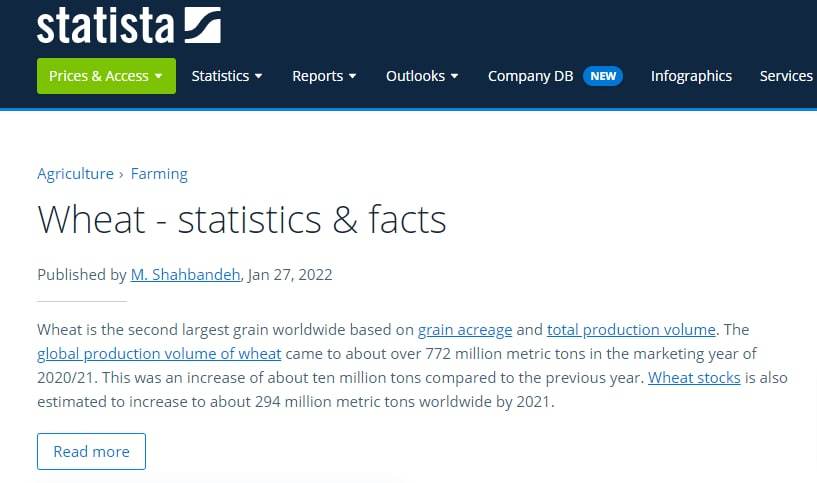
Although these figures are constantly updated as newer data pours in, there was indeed record wheat output in the face of relentless global lockdowns. However, most governments did little to build or expand their food stockpiles.
Granaries were an indispensable feature of ancient civilizations. The Bible recounts how Joseph guided Egypt through seven years of famine by establishing imperial granaries during the seven years of abundance. Thousands of years later, however, our modern-day sages are mesmerized by the WEF mantra of “you’ll own nothing and you’ll be happy” by 2030. Does that include ownership of real food? I ask this because the WEF is currently promoting synthetic meat and insect gourmet among other wonders.
If your government failed to set up a strategic food stockpile in the aftermath of the Arab Spring, do not blame Russia (or Ukraine) when the proverbial hits the fan.
Fertilizer stockpiles
Unfortunately, our Gosplan-styled world is overly-centralized, bringing with it attendant risks to the global supply chain. An acute fertilizer shortage is now one of them. Sanctions, and the freezing of $300 billion in Russian assets worldwide, were accompanied by bottlenecks in exports of grain and fertilizers. The escalating energy war between Russia and Europe is also pushing the price of natural gas and essential downstream products through the roof.
Fertilizers are primarily made from nitrogen, phosphorus and/or potassium. Nitrogen and ammonia (another fertilizer compound consisting of nitrogen and hydrogen) are extracted from natural gas. Our food security is therefore inextricably linked to fossil fuel production. This is an immutable reality which eco-warriors love to forget.
As the military operation in Ukraine drags on, few dare speculate the end game. However, Bloomberg warns that for the “first time ever, farmers the world over — all at the same time — are testing the limits of how little chemical fertilizer they can apply without devastating their yields come harvest time.” More ominously, fertilizer-producing factories worldwide number in the paltry hundreds. In other words, global agricultural output is expected to plummet – in both qualitative and quantitative terms – over the coming months.
Astrophysicist David Friedberg paints a more alarming picture. The ongoing West-Russia standoff may likely result in the starvation of hundreds of millions of additional people — over and above the 800 million who already face daily hunger. Our centralized just-in-time (JIT) global production system only allows for a 90-day food supply for the planet. The ongoing baby-formula shortage in the US is directly linked to the pitfalls of centralized JIT production.
Could this catastrophe have been avoided? The West and Russia had been on a collision course since 2014 – right after Moscow’s reincorporation of Crimea. The world has had eight long years to game out any escalation of the new West-Russia cold war. As Russia steadily built its gold reserves, the West could have likewise studied, identified and stored up items it needed from Russia in the event of a geopolitical escalation. Right at the top of that list should have been fertilizers and storable food. Instead, the West was more interested in Pussy Riot and the promotion of the liberal agenda.
Ultimately, there are absolutely no excuses for the criminal lack of foresight among governments. For those who wonder about the longevity of stored fertilizer, here are some facts from a gardening website: Liquid chemical fertilizers can be stored for a decade while liquid organic fertilizers have a shelf-life of 5-8 years. Dry granular or crystalized fertilizer can be stored indefinitely.
Where are the fertilizer storage facilities that could have buffered our farms for years?
Faecal farms
Over the coming months, the EU may be tempted to substitute chemical fertilizers from Russia with human waste sludge. However, as a recent Mongabay article cautions, “human waste — including pharmaceuticals and microplastics contained in faeces and urine — is a major public health hazard, causing disease outbreaks, and putting biodiversity at risk.” They contain a variety of contaminants and hazardous pathogens that may affect the entire food chain. Contaminants such as nanoplastics cannot be filtered out using conventional means.
Despite the evident risks, the UK reportedly imported 27,500 tonnes of Dutch sewage sludge for its agricultural needs in 2020. West European farms, by extension, have now become the biggest global reservoir of microplastics due to their use of sewage sludge. The degradation of the EU's farmland may be exacerbated as the Russia-Ukraine conflict drags on.
Whether famine will ravage the world by Christmas is anyone’s guess. But make no mistake: it will be poorer societies — primarily in Africa, the Middle East and South Asia — that will suffer first and foremost. Even if Russia and Ukraine sign a truce tomorrow and normality returns to the region, many parts of China are facing unprecedented lockdowns. The nuts and bolts of the global economy are now bobbing aimlessly inside countless vessels along the coastlines of China. These include items essential to agriculture.
Interestingly, the WHO has slammed China’s zero-Covid policy as being “unsustainable,” which is a marked departure from earlier praise heaped on New Zealand for doing the same thing.
In this cauldron of madness, our collective future was recently summed up this way: “The whole planet is a pot, and we're all frogs.”
The statements, views and opinions expressed in this column are solely those of the author and do not necessarily represent those of RT.


